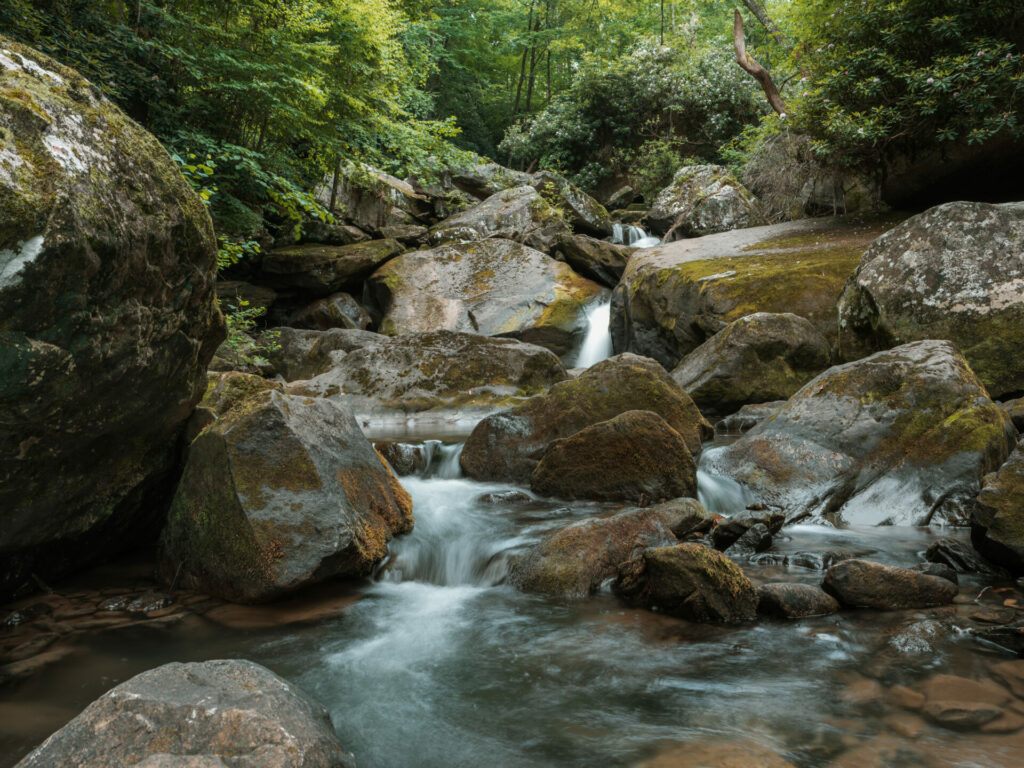
Located along the Cuyahoga River between Cleveland and Akron, Cuyahoga Valley National Park is a year-round destination for trail activities. You can choose the activity and difficulty you wish to pursue. You can walk, jog, run, bicycle, push a stroller, or use a wheelchair. You can find routes that are short and flat or long and rugged. Regardless of what you do on the trails in the spring, make sure you take time to enjoy nature’s reawakening. This article offers trail suggestions and spring changes that you might experience.
Haskell Run Trail is a hilly, half-mile loop that starts from Happy Days Lodge (500 West Streetsboro Road/State Route 303, Peninsula). The trail meanders through a forested ravine. Its moist environment makes it a particularly rich area for spring flowers. Return throughout the spring months to observe the progression of change.

Wildflower season starts as early as late February when skunk cabbage blooms. Skunk cabbage leaves don’t emerge until later in spring. In March, look for its low-growing, purple-and-brown flowering structure that resembles a hood. Peer into the hood to see the small yellow flowers protected inside.
As spring unfolds in April and May, plants grow in a hurry to soak up the sun before leaves close the forest canopy and shade the ground. April flowers include spring beauty, which has five white petals lined with pink. In early May, some of the more colorful flowers appear. Look for delicate bluets growing in the drier uplands and pink wild geraniums near the creek. Later in May, as the tree canopy closes, some more subtle flowers enter the procession, including foam flower and miterwort. Both have tiny white flowers that grow in delicate spikes.
Visit the Towpath Trail to watch birds and listen for frogs. The crushed limestone trail is relatively flat and is accessible for wheelchairs. Historically, it is the route that mules walked to tow boats along the Ohio & Erie Canal. Today, it is a multi-purpose trail that runs the length of the Cuyahoga Valley National Park and extends into Cleveland, Akron, and beyond. For spring nature observation, try the trail near Station Road Bridge Trailhead (Riverview Road and Chippewa Creek Drive, Brecksville) and the Beaver Marsh (Ira Trailhead; 3801 Riverview Road, Peninsula).
Bald eagles build their nest near the Towpath Trail north of Station Road Bridge starting in winter. The nest is visible from the trail, although you have to look across the Cuyahoga River to see it. While a few red-winged blackbirds linger during the winter, their numbers jump in March. Their distinctive song is a sign of spring that I anticipate each year. It sounds like a short and squeaky “oak-a,” followed by a long, trilling “lee.”
In April and May, numerous species of songbirds pass through the valley on their annual migration. Yellow-throated and cerulean warblers are two species that bird watchers come to Station Road Bridge Trailhead to find. If you haven’t experienced colorful songbirds during spring migration, it is worth attending a bird walk with an expert who can help you develop your skills. We offer monthly programs.
Frogs add to the sense of life re-emerging with spring. Spring peepers are the first frogs to join the spring chorus. They breed in groups that can number in the thousands. Their breeding call is a high-pitched peep that resembles jingling bells when their many voices mix together.

Many people come to the park to enjoy fall scenery, but spring also offers compelling views. The Ledges Overlook is a popular destination to appreciate how the 33,000 acres protected in the national park creates expansive scenery. The Ledges are a rocky outcrop that creates a natural plateau. The 2.2-mile Ledges Trail encircles the plateau, sometimes at its base and sometimes along its upper edge. The Ledges Overlook occurs at a high point on the plateau where the National Park Service also trims trees to create an opening. From there, you can look west across the entire valley.
Tree buds, flowers, and tender new leaves all contribute to spring scenery, subtle-to-brilliant colors and textures. The new growth is usually small and does not obscure the tree branches. Instead it highlights their shapes and patterns. Buds form during the previous year’s growing season and remain inconspicuous through winter. In late winter and spring, they swell and take on richer colors as they prepare to open.
All broad-leaved trees have flowers. Up close, you would not necessarily recognize them as flowers, because they tend to be small and may lack petals. However, they often grow in clusters and when viewed from a distance, give the tree an overall sense of color. When leaves first emerge, they are often a bright green, perhaps the origin of the color we call spring green. They may also briefly show hints of color created by other pigments in the leaves before it is masked by the green pigment chlorophyll.
The hiking series allows you to regularly join a ranger to explore the park and enjoy the spring scenery. This series takes you to places you might not find on your own, as well as offering the safety and socializing that comes with hiking in a group. The park publishes its programs in a quarterly publication, The Valley Guide, and also posts them online at www.nps.gov/cuva. If you have questions about how to visit the park, stop by the Boston Store Visitor Center (1550 Boston Mills Road, Peninsula) or call 330-657-2752.
We hope to see you in the Cuyahoga Valley National Park this spring.
Spring Recreation in the Cuyahoga Valley National Park






